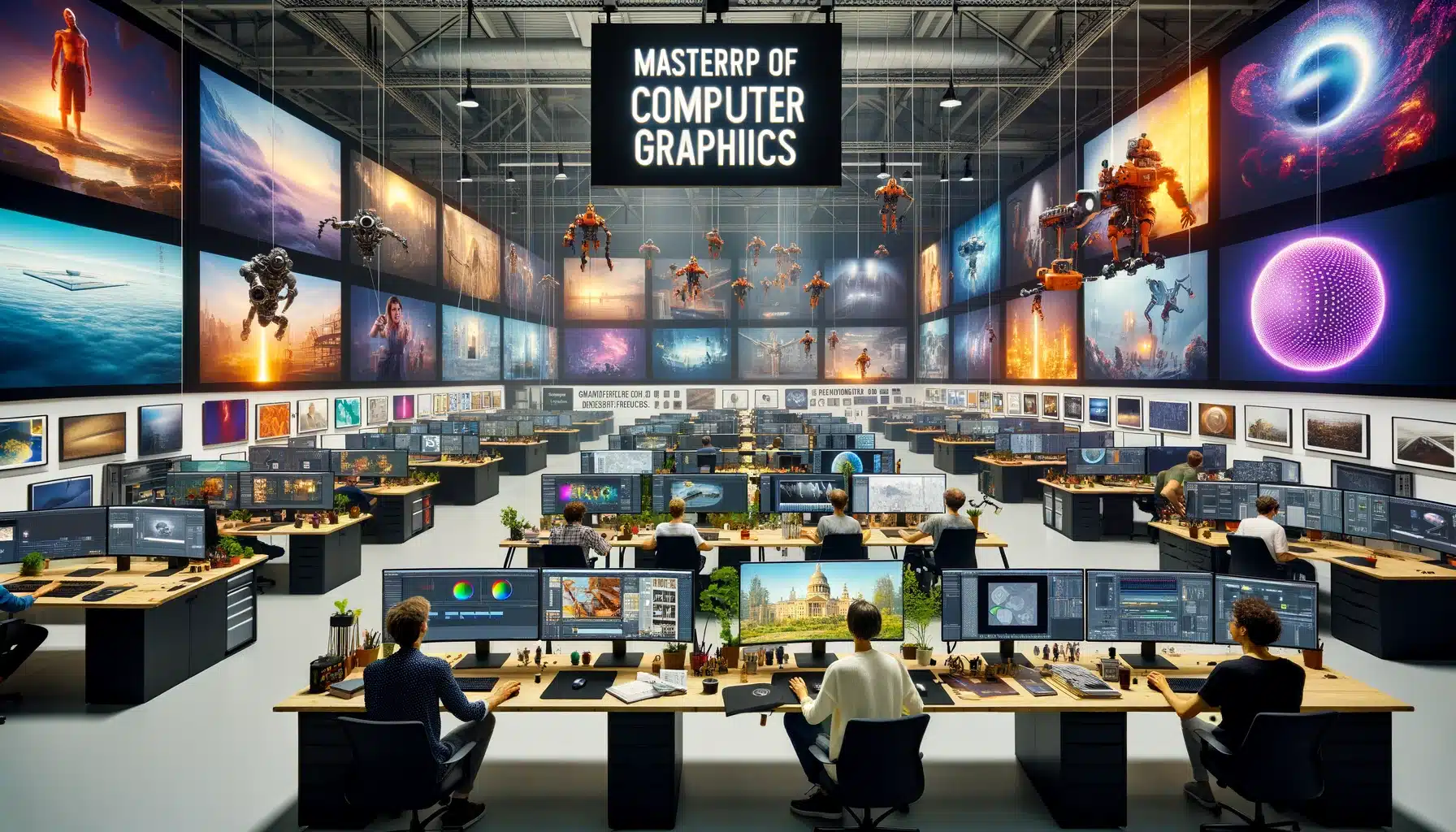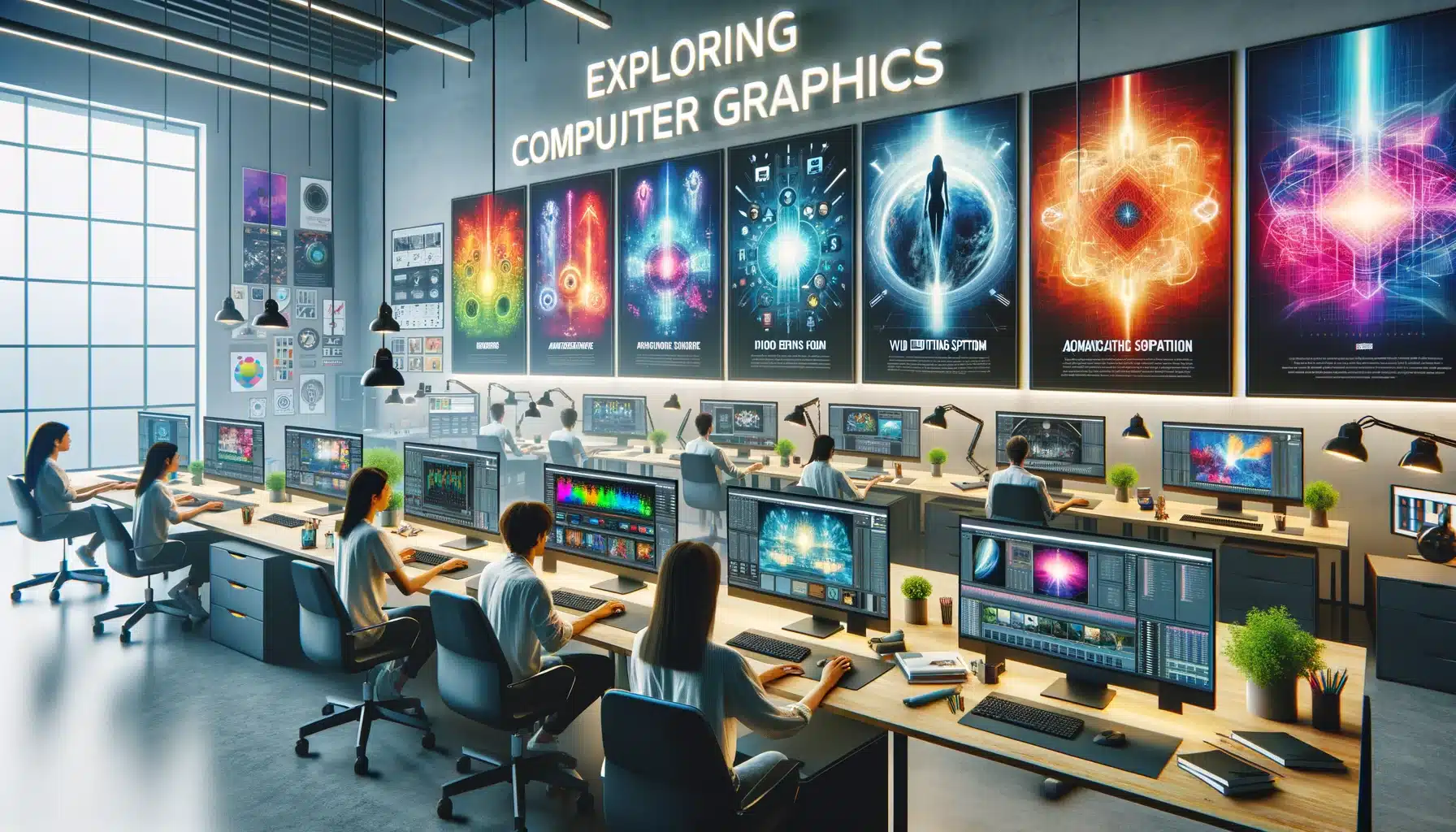Computer graphics is the discipline that involves the generation and manipulation of visual content using computing technology. It’s a wide field spanning a variety of visual content types, such as images, videos, 3D models, animations, and interactive elements. Computer graphics is integral to various industries such as entertainment (video games, movies, etc.), design (architecture, product design, etc.), scientific visualization, and more.
The History of Computer Graphics
The inception of computer graphics dates back to the 1950s when researchers began exploring the possibility of using computers to create and manipulate images. The first instance of computer graphics can be attributed to the American engineer and computer scientist William Fetter, who coined the term “computer graphics” in 1960 to describe his work at Boeing. He developed the first computer model of a human body, famously known as “Boeing Man.”
In 1962, Ivan Sutherland, another computer scientist, introduced Sketchpad, considered the first graphical user interface (GUI), which laid the foundation for future computer-aided design (CAD) programs. With the advent of the 1980s and 90s, computer graphics started to become mainstream with the rise of video games, the Internet, and CGI in movies.
Detailed Overview of Computer Graphics
Computer graphics is divided into two main categories: raster graphics and vector graphics. Raster graphics, also known as bitmap graphics, are made up of individual pixels, each having specific color information. This format is typically used in digital photography and other detailed images.
Vector graphics, on the other hand, are composed of paths defined by mathematical formulas. These graphics are easily scalable without loss of quality and are typically used for logos, typography, and illustrations.
Computer graphics involves various algorithms and techniques for creating, storing, and manipulating visual data. It uses mathematical models to render realistic and complex scenes and visual effects.
How Computer Graphics Works
At the core of computer graphics is the rendering process, which transforms a mathematical representation of a scene into a final image. There are two main types of rendering: real-time and offline (or pre-rendering).
Real-time rendering is used when the image must be computed quickly, as in video games or simulations. It uses techniques to approximate the final image while maintaining a high frame rate. Graphics Processing Units (GPUs) play a significant role in real-time rendering, taking over the heavy calculations from the Central Processing Unit (CPU).
Offline rendering is used when the final image’s quality is more critical than the time taken to produce it, as in movies and animations. This method can compute complex light interactions, resulting in highly realistic images.
Key Features of Computer Graphics
- Rendering: Converting 3D models into 2D images or animations.
- Animation: Bringing graphics to life by creating a sequence of images or frames.
- User Interfaces: Designing the visual elements of software applications.
- Visual Effects (VFX): Creating, integrating, or manipulating images to achieve a desired effect.
- Virtual Reality (VR) and Augmented Reality (AR): Creating immersive, interactive experiences.
Types of Computer Graphics
| Type | Definition |
|---|---|
| Raster Graphics | Graphics composed of pixels. Common formats include JPEG, PNG, and GIF. |
| Vector Graphics | Graphics based on mathematical formulas. Common formats include SVG and EPS. |
| 3D Graphics | Graphics that represent objects in three dimensions. Used in games, movies, etc. |
| GUI | Graphics used in software applications to interact with users. |
Applications and Challenges of Computer Graphics
Computer graphics find applications in diverse fields:
- Entertainment: In movies, video games, and virtual reality experiences.
- Design: In architecture, product design, and graphic design.
- Science and Engineering: For simulations, data visualization, and scientific research.
- Medicine: For medical imaging and simulation of surgeries.
- Education: For interactive learning and visualization of complex concepts.
Despite its extensive applications, computer graphics also pose challenges. High-quality graphics require substantial computing power and memory. Ensuring compatibility across different systems and devices can be difficult. Moreover, creating realistic graphics involves complex algorithms and a deep understanding of light physics.

Comparison with Similar Concepts
| Concept | Definition | Comparison with Computer Graphics |
|---|---|---|
| CAD | Computer-Aided Design involves the use of computer systems to aid in the creation, modification, analysis, or optimization of a design. | CAD is a specific application of computer graphics, primarily used in engineering and design fields. |
| CGI | Computer-Generated Imagery is the application of computer graphics to create or contribute to images in art, printed media, video games, films, television programs, commercials, videos, and simulators. | CGI is a subset of computer graphics, focusing on creating images and animations for visual media. |
Future Perspectives of Computer Graphics
The future of computer graphics looks promising with advancements in technology like ray tracing, machine learning, and AI. Ray tracing, a technique that simulates the physics of light to create highly realistic images, is becoming accessible in real-time applications like video games.
Machine learning and AI are being used to automate and improve the process of creating graphics. They can help generate realistic textures, animate complex scenes, and optimize rendering processes. Another emerging technology is holography, which could revolutionize how we interact with computer graphics by creating truly three-dimensional displays.
Proxy Servers and Computer Graphics
Proxy servers can be valuable in the context of computer graphics in several ways. For businesses or individuals dealing with high amounts of graphical data, proxy servers can enhance security, control, and performance. They can help distribute traffic, reduce load times, and accelerate data requests in cloud-based graphic design tools or platforms.
For example, a CGI company might use proxies to distribute rendering tasks across multiple machines securely and efficiently. Moreover, proxies can also provide anonymous access to online resources or software, ensuring data privacy and security.

Related Links
For more information about Computer Graphics, you may refer to the following resources:
- Computer Graphics Principles and Practice
- Fundamentals of Computer Graphics
- Computer Graphics World
- ACM SIGGRAPH
This overview provides a comprehensive introduction to computer graphics, its history, key features, applications, and future perspectives. It also explains how computer graphics can interact with proxy servers and enhance their functionality and performance.




